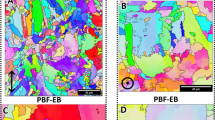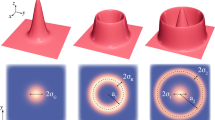Abstract
Laser Powder-Bed Fusions (LPBF), a class of additive manufacturing (AM), is a promising technique for producing components with complex geometry design. However, parts fabricated by LPBF suffer from residual stresses arising due to substantial temperature gradients inherent to the process. Numerical models are unable to provide a comprehensive thermal history of the built materials efficiently due to the mismatch between the characteristic length scales and infinitesimal time steps needed for complete simulations. In the present work, an extended Rosenthal’s model is presented by considering the effects of various heat dissipation/consumption mechanisms. The modeling results of energy auditing of thermal boundary conditions for stainless steel (SS17-4PH) laser melting indicated that the total energy losses by convection, radiation, and melting are less than 20% among which, radiation is the most dominant part. A comparison of the results obtained by the extended Rosenthal’s equation with finite element numerical predictions and experimental data shows a good agreement. Also, a parametric study has been conducted to identify the influence of laser scanning velocity, beam radius, and power on the overall temperature distributions and melt geometry. The present study can pave the way for the prospective use of this methodology to conduct further investigation such as microstructure analysis and thermo-mechanical modeling which are needed to predict residual stresses and distortions.














Similar content being viewed by others
Data Availability
The datasets used in the current study are available from the corresponding author on reasonable request.
Abbreviations
- A :
-
Surface area [m2]
- c P :
-
Heat capacity [J/kg.K]
- D :
-
Melt pool depth [μm]
- f :
-
Porosity
- h :
-
Heat transfer coefficient [W/m2.K]
- H :
-
Bed thickness under consideration [m, μm]
- I :
-
Power density distribution [W/m2]
- k :
-
Thermal conductivity [W/m.K]
- L :
-
Length of bed/melt pool [m, μm]
- P :
-
Power [W]
- q" :
-
Heat flux [W/m2]
- Q :
-
Volumetric heat source [W/m3]
- Q v :
-
Heat flux distribution [W/m3]
- Q 0 :
-
The highest value of heat intensity [W/m3]
- Ra :
-
Convection Raleigh number
- r e :
-
The upper radius of heat source [m]
- r i :
-
The lower radius of heat source [m]
- t :
-
Time [s]
- T :
-
Temperature [°C, K]
- V :
-
Laser velocity [m/s], Melt pool volume [μm3]
- W :
-
Melt pool width [μm]
- x, y, z :
-
Spatial directions [m]
- z e :
-
The upper surface of the heat source in z-direction [m]
- z i :
-
The lower surface of the heat source in z-direction [m]
- α :
-
Thermal diffusivity [m2/s]
- β :
-
Bed surface absorptivity
- Δ :
-
Difference
- ϵ :
-
Bed surface emissivity
- ξ, η, ζ :
-
Moving coordinates [m]
- ρ :
-
Density [kg/m3]
- σ :
-
Stefan-Boltzmann coefficient [W/m2.K4]
- λ :
-
Latent heat of flusion [kJ/kg]
- A:
-
Argon
- B :
-
Bed
- C :
-
Chamber wall/shielding gas
- Conv :
-
Convection
- Evp :
-
Evaporation
- f :
-
Film
- i :
-
Individual volumes
- L :
-
Laser
- Loss :
-
Losses
- m :
-
Mean/effective/melt pool
- Melt :
-
Melt pool/Melting
- Rad :
-
Radiation
- Surf :
-
Bed surface
References
Adam, G.A.O., Zimmer, D.: Design for Additive Manufacturing-Element transitions and aggregated structures. CIRP J. Manuf. Sci. Technol. 7(1), 20–28 (2014)
Srdja Zekovic, R.K., Dwivedi, R.: Thermo-structural Finite Element Analysis of Direct Laser Metal Deposited Thin-Walled Structures. Proc. SFF Symp. Austin, TX. (2005)
Petrick, I.J., Simpson, T.W.: Point of view: 3D printing disrupts manufacturing: how economies of one create new rules of competition. Res. Manag. 56(6), 12–16 (2013)
Zhao, X., Promoppatum, P., Yao, S-C.: Numerical Modeling of Non-linear Thermal Stress in Direct Metal Laser Sintering Process of Titanium Alloy Products, Proceeding First Therm. Fluids Eng. Summer Conf., no. October (2016)
Wimpenny, D.I., Pandey, P.M., Jyothish Kumar, L.: Advances in 3D Printing & additive manufacturing technologies. Springer, Singapore (2017)
I. Yadroitsev, I. Yadroitsava, Smurov I.: Strategy of fabrication of complex shape parts based on the stability of single laser melted track. Laserbased Micro-and Nanopackaging and Assembly V. Vol. 7921. International Society for Optics and Photonics (2011)
Gong, H., Rafi, K., Gu, H., Starr, T., Stucker, B.: Analysis of defect generation in Ti-6Al-4V parts made using powder bed fusion additive manufacturing processes. Addit Manuf. 1, 87–98 (2014)
Elsheikh, A.H., Guo, J., Lee, K.M.: Thermal deflection and thermal stresses in a thin circular plate under an axisymmetric heat source. J Therm Stress. 42(3), 361–373 (2019)
ROSENTHAL, D.: Mathematical theory of heat distribution during welding and cutting. Weld. J. 20, 220–234 (1941)
Michaleris, P.: Modeling metal deposition in heat transfer analyses of additive manufacturing processes. Finite Elem. Anal. Des. 86, 51–60 (2014)
Gürtler, F.J., Karg, M., Leitz, K.H., Schmidt, M.: Simulation of laser beam melting of steel powders using the three-dimensional volume of fluid method. Phys. Procedia. 41(July 2017), 881–886 (2013)
Li, Y., Gu, D.: Parametric analysis of thermal behavior during selective laser melting additive manufacturing of aluminum alloy powder. Mater. Des. 63, 856–867 (2014)
Dong, L., Makradi, A., Ahzi, S., Remond, Y.: Three-dimensional transient finite element analysis of the selective laser sintering process. J. Mater. Process. Technol. 209(2), 700–706 (2009)
Kolossov, M.L.S., Boillat, E., Glardon, R., Fischer, P.: 3D FE simulation for temperature evolution in the selective laser sintering process. Int. J. Mach. Tools Manuf. 44(2-3), 117–123 (2004)
Loh, L.E., Chua, C.K., Yeong, W.Y., Song, J., Mapar, M., Sing, S.L., Liu, Z.H., Zhang, D.Q.: Numerical investigation and an effective modelling on the selective laser melting (SLM) process with aluminium alloy 6061. Int. J. Heat Mass Transf. 80, 288–300 (2015)
Ganeriwala, R., Zohdi, T.I.: Multiphysics modeling and simulation of selective laser sintering manufacturing processes. Procedia CIRP. 14, 299–304 (2014)
Kovaleva, I., Kovalev, O., Smurov, I.: Model of heat and mass transfer in random packing layer of powder particles in selective laser melting. Phys. Procedia. 56(C), 400–410 (2014)
Mohanty, S., Hattel, J.H.: Numerical model based reliability estimation of selective laser melting process. Phys. Procedia. 56(C), 379–389 (2014)
Dai, D., Gu, D.: Thermal behavior and densification mechanism during selective laser melting of copper matrix composites: simulation and experiments. Mater. Des. 55, 482–491 (2014)
Elsheikh, A.H., Shanmugan, S., Muthuramalingam, T., Kumar, R., Essa, F.A., Ibrahim, A.M.M.: Modeling of the Transient Temperature Field during Laser Heating. Lasers Manuf. Mater. Process. 8.2, 97–112 (2021)
Elsheikh, A.H., Guo, J., Huang, Y., Ji, J., Lee, K.M.: Temperature field sensing of a thin-wall component during machining: numerical and experimental investigations. Int. J. Heat Mass Transf. 126, 935–945 (2018)
Gusarov, A.V., Yadroitsev, I., Bertrand, P., Smurov, I.: Model of Radiation and Heat Transfer in Laser-Powder Interaction Zone at Selective Laser Melting. J. Heat Transf. 131(7), 072101 (2009)
Eagar, T.W., Tsai, N.S.: Temperature fields produced by traveling distributed heat sources. Weld. J. 62(12), 346–355 (1983)
Nunes, A.C.: An Extended Rosenthal Weld Model A moving heat source weld model can be extended to include effects of phase changes and circulations in the weld pool. Am. Weld. Soc. 62, 165–170 (1983)
Brown, S., Song, H.: Finite Element Simulation of Welding of Large Structures. J. Eng. Ind. 114(4), 441 (1992)
Holman, J.P.: Heat Transfer, 10th edn. McGraw-Hill Book Company (2010)
Cho, J.H., Farson, D.F., Milewski, J.O., Hollis, K.J.: Weld pool flows during initial stages of keyhole formation in laser welding. J. Phys. D. Appl. Phys. 42(17), 175502 (2009)
Gratton, A.: Comparison of Mechanical , Metallurgical Properties of 17-4PH Stainless Steel between Direct Metal Laser Sintering ( DMLS ) and Traditional Manufacturing Methods. Proc Natl Conf Undergrad Res. 2012, 423–431 (2012)
German, R.M., Seong, J.P.:Handbook of mathematical relations in particulate materials processing: ceramics, powder metals, cermets, carbides, hard materials, and minerals. Vol. 3. John Wiley& Sons (2009)
Sabau, A.S., Porter, W.D.: Alloy shrinkage factors for the investment casting of 17-4PH stainless steel parts. Metall. Mater. Trans. B Process Metall. Mater. Process. Sci. 39(2), 317–330 (2008)
Promoppatum, P., Yao, S., Pistorius, P.C., Rollett, A.D.: A comprehensive comparison of the analytical and numerical prediction of the thermal history and solidification microstructure of Inconel 718 products made by laser powder-bed fusion. Engineering. 3(5), 685–694 (2017)
Ning, J., Mirkoohi, E., Dong, Y., Sievers, D.E., Garmestani, H., Liang, S.Y.: Analytical modeling of 3D temperature distribution in selective laser melting of Ti-6Al-4V considering part boundary conditions. J. Manuf. Process. 44(March), 319–326 (2019)
Mirkoohi, E., Tran, H.C., Lo, Y.L., Chang, Y.C., Lin, H.Y., Liang, S.Y.: Analytical modeling of residual stress in laser powder bed fusion considering part’s boundary condition. Crystals. 10(4), 337 (2020)
Zhang, Z., Huang, Y., Rani Kasinathan, A., Imani Shahabad, S., Ali, U., Mahmoodkhani, Y., Toyserkani, E.: 3-dimensional heat transfer modeling for laser powder-bed fusion additive manufacturing with volumetric heat sources based on varied thermal conductivity and absorptivity. Opt. Laser Technol. 109, 297–312 (2019)
Shahabad, S.I., Zhang, Z., Keshavarzkermani, A., Ali, U., Mahmoodkhani, Y., Esmaeilizadeh, R., Bonakdar, A., Toyserkani, E.: Heat source model calibration for thermal analysis of laser powder-bed fusion. Int. J. Adv. Manuf. Technol. 106(7–8), 3367–3379 (2020)
Khan, M.S., Shahabad, S.I., Yavuz, M., Duley, W.W., Biro, E., Zhou, Y.: Numerical modelling and experimental validation of the effect of laser beam defocusing on process optimization during fiber laser welding of automotive press-hardened steels. J. Manuf. Process. 67(February), 535–544 (2021)
Muthuramalingam, T., Akash, R., Krishnan, S., Phan, N.H., Pi, V.N., Elsheikh, A.H.: Surface quality measures analysis and optimization on machining titanium alloy using CO2 based laser beam drilling process. J. Manuf. Process. 62(December 2020), 1–6 (2021)
Qiu, C., Panwisawas, C., Ward, M., Basoalto, H.C., Brooks, J.W., Attallah, M.M.: On the role of melt flow into the surface structure and porosity development during selective laser melting. Acta Mater. 96, 72–79 (2015)
Gusarov, A.V., Yadroitsev, I., Bertrand, P., Smurov, I.: Heat transfer modelling and stability analysis of selective laser melting. Appl. Surf. Sci. 254(4), 975–979 (2007)
Kasperovich, G., Haubrich, J., Gussone, J., Requena, G.: Correlation between porosity and processing parameters in TiAl6V4 produced by selective laser melting. Mater. Des. 105, 160–170 (2016)
Khanzadehdaghalian, M., Bian, L., Shamsaei, N., Thompson, S.M.: Porosity Detection of Laser Based Additive Manufacturing Using Melt Pool Morphology Clustering, Solid Free. Fabr. 2016 Proc. 26th Annu. Int, pp. 1487–1494, (2016)
Acknowledgments
This work was supported by funding from the Natural Sciences and Engineering Research Council of Canada (NSERC), the Federal Economic Development Agency for Southern Ontario (FedDev Ontario). Besides, the authors would like to appreciate Zhidong Zhang for his support in LPBF modeling and in providing experimental data.
Code Availability
Not applicable.
Funding
This work was supported by funding from the Natural Sciences and Engineering Research Council of Canada (NSERC), the Federal Economic Development Agency for Southern Ontario (FedDev Ontario).
Author information
Authors and Affiliations
Contributions
Gholamreza Karimi: Initiating the idea and working on the theoretical part of the manuscript, writing, review, and editing.
Shahriar Imani Shahabad: Conducting LPBF numerical analysis, writing, review, and editing.
Ehsan Toyserkani: Supervision, writing, review, and editing.
Corresponding author
Ethics declarations
Ethics Approval
Not applicable.
Consent to Participate
Not applicable.
Consent for Publication
Not applicable.
Conflict of Interest/Competing Interests
The authors have no conflict of interest to declare that are relevant to the content of this article.
Additional information
Publisher’s Note
Springer Nature remains neutral with regard to jurisdictional claims in published maps and institutional affiliations.
Rights and permissions
About this article
Cite this article
Imani Shahabad, S., Karimi, G. & Toyserkani, E. An Extended Rosenthal’s Model for Laser Powder-Bed Fusion Additive Manufacturing: Energy Auditing of Thermal Boundary Conditions. Lasers Manuf. Mater. Process. 8, 288–311 (2021). https://doi.org/10.1007/s40516-021-00148-0
Accepted:
Published:
Issue Date:
DOI: https://doi.org/10.1007/s40516-021-00148-0




